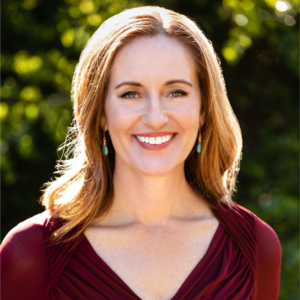Artist Reception or Appreciation Party
(Transcription)
Artist, Lydia Mallison-Jones, Kansas City, Kansas
QUESTION: What were your challenges?
Lydia Mallison-Jones: One, not knowing who my target market are and how to connect with them, how to reach out with them. Is it social media? Is it face to face? How do I get myself connecting with these people and kind of pulling all these people together to present myself to them in whatever form, online or in person? And then classically lots of people say this, a lack of focus, a lack of knowing how to use my energy and time successfully that would mean that I’m actually building this as a business and I’ve actually got some income.
QUESTION: What changed for artist Lydia Mallison-Jones?
Lydia Mallison-Jones: I just had a paradigm shift. This is no longer going to be a hobby. I didn’t even like calling it a hobby. I was one of those people that would be like ‘my artist is not a hobby’, but actually wake up call- boom! Yes. It was a hobby basically. And I was panzing around not doing anything, not bringing any money in. Not spending a huge amount on it as a hobby, but certainly I wanted to sell and I had no plan. No plan to sell anything. So nothing’s happening. And so eight months ago I had a paradigm shift. I was like, no, this needs to be a business and I have no idea how to make it into a business. And then it was three months ago that I just came across an ad on Facebook. It was one of your ads via Facebook. And it stopped me in my tracks and I was like, hmm, this looks interesting. And so then I read, absolutely every blog entry of yours watched absolutely. Every video.
QUESTION: What “product” does an artist sell?
Lydia Mallison-Jones: That art is emotion, or that the emotion is a huge, massive part of it.
Ann Rea: It’s the product itself.
Lydia Mallison-Jones: It is the product itself, and that’s what I had not quite, it was like these two pieces of jigsaw just finally clicked together, and it made me remember the times, previous times where like first exhibition I ever did, it’s like 10 years ago now, nearly 10 years ago. A very good friend of mine, she walked in and she saw a pair of paintings that actually have a huge, huge significance to me, the reason I painted them, and she just burst into tears and she could not explain why she was crying.
QUESTION: What are people buying?
Ann Rea: The purchase is the affirmation that they experienced the emotion so significantly that they want to hold it in their heart, they want to keep it.
Lydia Mallison-Jones: Yeah. And every time that they look at it again, it re-enlivens all those emotions and that’s why they’re delighted to have it on their wall.
QUESTION: Hosting an appreciation party.
Lydia Mallison-Jones: Good idea. Oh really good idea. I like that. Okay. That’s scary. At the same time, that really scares me because there’s a different level of vulnerability there than I have gone to before, I was like, wow, okay. I was shaking at that idea but I think I need to do. And I kind of procrastinated. There was a few weeks where I was like, I just put the date in the calendar and then I was like, I just need to pick a date and then just go for it and start texting people, Facebook messaging, just writing down the people that I thought would be a fantastic mix to come and hang out in my house. And just hang together and be, be my kind of people, tribe of people, some of whom had never met each other. I was interested in the dynamics of that. I just kind of went, okay, boom, there’s the date, and once I’d sent the messages out, I couldn’t not do it then because I would have been shooting myself in the foot.
QUESTION: How did you get past your fear?
Lydia Mallison-Jones: I’d actually been reading a book by Brene Brown called Daring Greatly and in it she says that approval is not what drives her. Success is not what drives her. Recognition is not what drives her, but courage and choosing courage. And I was like, Ooh, okay. So I’ve got to stop thinking about or perhaps set aside what I feel success looks like for this evening and just focus on being courageous, whatever this looks like. I’m being courageous and people admire people who have been courageous. Well at least these people are going to maybe admire me, I hope, for being really out there in doing an unusual event.
QUESTION: How did you prepare?
Lydia Mallison-Jones: I could in the emotion of the evening, get all a flutter and not know what to say, so I was like, right, okay, I have to write this down and I’m just going to have to have it on a piece of paper in front of me and read it out. And that was great because it enabled me to be succinct,
Ann Rea: In control of your gushing emotion, right?
Lydia Mallison-Jones: Well partly because, you know, you just get all like, “Oh I’m so glad you’re at my party” It was really funny because I actually practiced reading it out to my husband the night before. I started crying. My husband started crying. He was like, shine on! This is going to be my one big blob fast. We’re all just going to cry and then actually be on the evening, and it was so funny ’cause I was, as I was reading it, I was like, I’ve got all my tears out yesterday. I read it out to Steve. He cried, we cried, we all cried and I’m not going to cry right now. So I managed to get it out and people were so touched by how I’d just loved on them and biged them up and told each of them, people that had never met each other, the kind of different synergies that they might have and that that’s why I invited them. And it was, it was such a cool evening all around. Actually, I didn’t realize this until after the event but a friend, the most unlikely guy, the most unlikely person in the evening cried in front of one of my paintings. And I didn’t even know it ’cause I wasn’t even in that room at the time. He then cried all the way home and then, bless him it was so sweet, he didn’t purchase a piece of my art, but he gave me some cash towards my business as a gift.
QUESTION: What if you had just exhibited your art?
Ann Rea: Let’s just say you stuck your paintings on the wall and put out some cheese and wine and you didn’t do the appreciation part of it, how do you think it would have been different?
Lydia Mallison-Jones: Oh, it would have been completely flat. It would have been flat Sprite. (laughs)
Ann Rea: Exactly. It would have been flat. And that’s how most receptions and open studios are. They’re flat. They’re boring. Awkward. Stuffy. People feel weird and insecure. The artist is feeling insecure because the artist is worried no one’s going to buy anything. They’re uncomfortable selling. They haven’t learned how, but with this do you feel like you had to actually, were you selling or how did that feel? Do you feel like you were selling and manipulating people or what?
Lydia Mallison-Jones: No. I felt like I was being genuinely me. I felt like I was giving that a go.
QUESTION: Was it expensive?
Lydia Mallison-Jones: No, no, it wasn’t desperately expensive. It was worth it, whatever was spent. We were wise about how we did it and got our kids involved in making some little appetizers and actually people brought stuff that we didn’t expect, some trays of appetizers and drinks. It was just really sweet. It felt like that we’d all put the evening together. It wasn’t just that I had hosted it and done everything people wanted to be involved in the kind of creation of the atmosphere in a way by bringing things to the table.
QUESTION: What about those who did not attend?
Lydia Mallison-Jones: Actually there was a lady who who wasn’t able to come and she really wanted to come. Actually just this last week she was talking about how beautifully community can happen between neighbors and how, you were mentioning community, and an event like this brings connection between people that otherwise wouldn’t have happened. She’s previously expressed some interest in my work and last week, even though she hadn’t come to the event, which was a number of weeks before, she got very excited about the idea of buying a piece of mine and having it over her mantle piece in THE space in her house, that’s a very special spot. She’s going to buy it.
QUESTION: Should other artists apply?
Lydia Mallison-Jones: Actually enrolling is the next step. For me it was like, I knew that I needed to get the money to buy the key to open the door and that this was a critical next step in setting the foundations for my business. I just knew that this was the right thing and the right way forward. And that the elements of your program, and even the order that they’re set is the way to set the foundation for my business. They should just jump in. I had to wait months to be able to jump in because I didn’t have the money and I had to get creative on how I was going to get the money. And it was an emotional rollercoaster. I had days where I was thinking, this isn’t going to happen, and then feeling really crestfallen that I was going to have to wait longer to be able to get the material that I needed to then be able to take my business to the next level. If you’ve got the disposable cash, don’t go buy art materials right now, sign up. Even before having signed up I knew that this was the right thing to do and having signed up and started to connect with new bodies on Facebook I’m super excited as to where this goes and how this blossoms.

Ann Rea, Fine Artist & Mentor
Ann Rea is a San Francisco-based fine artist. She created Making Art Making Money®, the leading and most reputable business program for fine artists since 2005. Rea’s art and business savvy have been featured on ABC, HGTV, Creative Live, The Good Life Project, in the book Career Renegade by Jonathan Fields, the San Francisco Chronicle, Art Business News, Fortune, and Inc. Magazines. Rea’s artistic talent was commended by her mentor, art icon Wayne Thiebaud.
